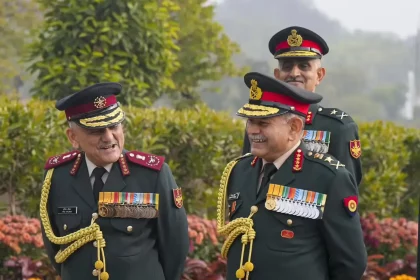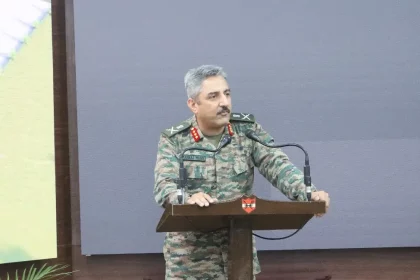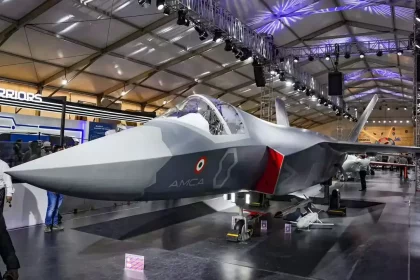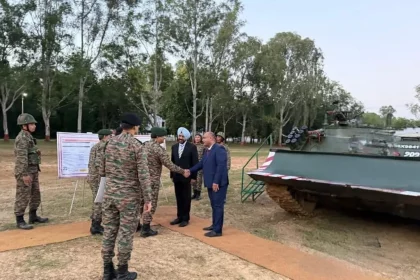Clash on NH-44: Police Officer Accused of Assaulting Army Soldier in Ramban
The alleged assault on a Sikh soldier has been condemned as an insult to the uniform and a violation of…
War Is Fought by the Entire Nation, Not Just Armed Forces: CDS General Anil Chauhan
Chief of Defence Staff (CDS) General Anil Chauhan on Monday said that wars are not fought by the armed forces…
Second Phase of Tri-Services Joint Air Defence Instructors Course Begins at Army Air Defence College, Gopalpur
Tri-Services officers undergo advanced training at AADC Gopalpur to enhance interoperability and joint air defence integration.
Higher Command Course Officers Visit Trishakti Corps to Review Operational Preparedness
Higher Command Course officers gain firsthand insights into Trishakti Corps’ high-altitude operations, tri-service coordination, and strategic frontier defence.
India Shortlists Seven Firms for AMCA Stealth Fighter Production; DRDO and Defence Ministry Begin Evaluation
India’s fifth-generation AMCA fighter project enters evaluation phase as DRDO and Defence Ministry review bids from seven major industrial consortiums,…
Kharga Corps Inducts Refurbished WZT-3 Armoured Recovery Vehicles from Airbonics Defence & Space
Refurbished WZT-3 Armoured Recovery Vehicles Enhance Kharga Corps’ Battlefield Support Capabilities, Marking Another Step Toward India’s Atmanirbhar Defence Vision.






